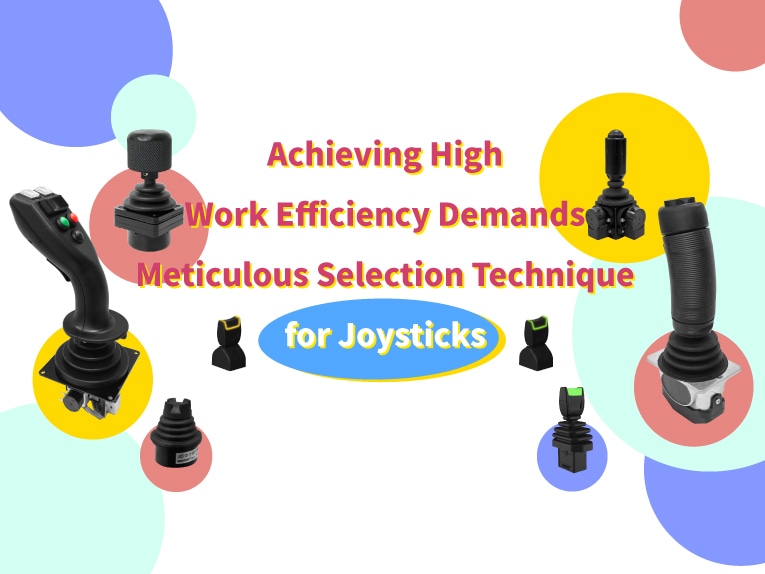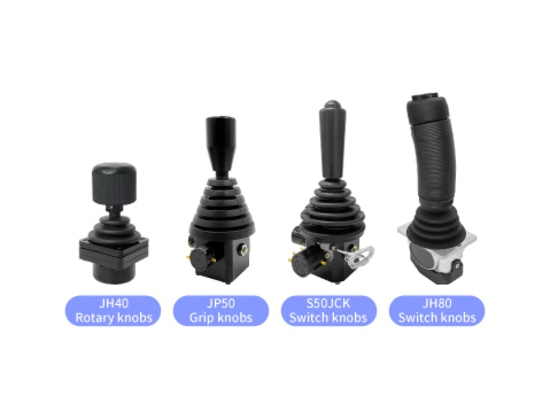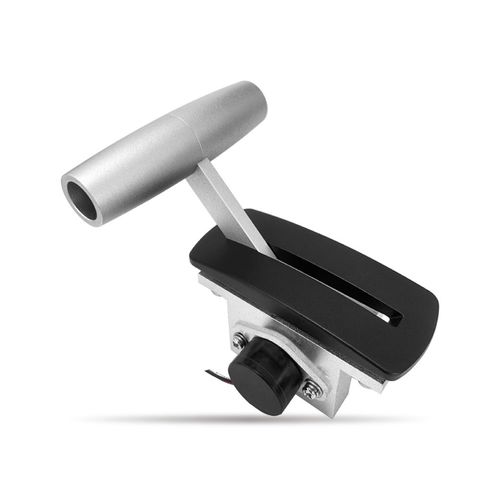
#Product Trends
Achieving High Work Efficiency Demands Meticulous Selection Technique!
Joysticks, ubiquitous control components, find extensive applications across various industrial domains. To aid in your quest for the ideal joystick tailored to your equipment, here's a guide to choosing the right one.
01 Joystick Size
The size of SIBO joysticks typically denotes the dimensions of the joystick body. When making your selection, consider the appropriate size based on the installation space allocated for the joystick on your equipment. SIBO offers a comprehensive range of joysticks to cater to diverse requirements.
02 Joystick Operation Modes
SIBO joysticks come in diverse operation modes, encompassing single-axis operation, dual-axis operation, 3-axis operation, and multi-axis operation.
• XI Single-axis operation: Moves forward and backward along the Y-axis.
• YX Dual-axis cross type: Executes linear motion along both the X and Y axes.
• YO Dual-axis omnidirectional type: Moves freely within a circular area.
• YQ Dual-axis square type: Moves freely within a square area.
Additional operation modes, such as 3-axis or higher, can be achieved by incorporating rotary knobs, customized handles, thumb joysticks, or seasaw potentiometers.
03 Joystick Action Modes
Our joysticks can be equipped with or without return mechanisms. Return mechanisms include center return, one-axis end return, or one-axis return while others do not.
• Center return: The main axis of the joystick remains centered in its natural state. Upon releasing the joystick handle during operation, it automatically returns to the center position, the most common form of center-return.
• Return to one end of the axis (unilateral return): It refers to keeping the main axis of the joystick at one end of the Y-axis. When the operator releases the knob during operation, the main axis will automatically return to the end of the Y-axis. It is usually used on the one-axis joysticks. (此部分漏翻了,请您批阅)
50JCK Single-axis Return
• One-axis returns, the other doesn’t: This refers to having a centering function only on one axis in both the X and Y axis directions, while the other axis lacks a return device. On the axis without a return, high torque operating pressure can be applied to prevent displacement of the joystick's main shaft due to vibration, etc.
• Non-return type joystick: Also known as a friction positioning joystick, it can halt at any operating position. Typically operating under high-torque conditions, it maintains the joystick's main shaft at any position. Due to the challenge in determining the center position of the non-return joystick, we recommend installing a center brake gear when center position precision is necessary. This facilitates easy identification of the center position during joystick operation, greatly enhancing convenience.
JH45 Without Return
Most of our joysticks can achieve various return forms mentioned above and, based on your system requirements, can be combined with brake gears, microswitches, signal communication modules, etc., to enhance control feasibility. You can also opt to install locking mechanisms at the center or both ends to meet elevated safety requirements in specific applications.
04 Joystick Knobs
Different knob options for joysticks can fulfill various functions depending on usage scenarios and requirements. We offer various shapes of customized knobs, including grip knobs, single-button switch knobs, double-button switch knobs, rotary knobs, and other special function knobs.
• Grip knob: The fundamental knob type in our joysticks, all SIBO joysticks come with grip knobs. We offer various straight rod-shaped knobs for your selection, and you can also customize special-shaped handles conforming to ergonomics.
• Switch knobs: Buttons switches installed on grip knobs can be highly customized. Options include trigger-type switches or toggle switches, choice of switch cover color, or switches with lights. Special switches such as toggle switches are also available upon request.
• Rotary knobs: SIBO's rotary knobs feature a rotating mechanism at the top, typically with a resistance element or angle sensor chip inside, facilitating analog signal output proportional to the rotation angle. This adds an additional output axis to the two-axis output of the joystick body, commonly referred to as the Z-axis.
• Special knobs: Sakae's Mini Cobra knob, Cobra knob, and SENTOP's CB knob offer large mounting panels accommodating 6-8 button switches, seesaw potentiometers, finger joysticks, or thumb joysticks. The back of the handle can be equipped with trigger switches (also known as enable keys or deadman keys), offering high flexibility and configurability. Combined with the functions of the joystick body, complex control requirements can be achieved.
•
05 Joystick Output Types
• Switch-type joysticks: These output signals are either "on" or "off", typically achieved through button switches or microswitches to output digital signals. Microswitches can be customized to trigger angles, enabling functions such as center switch, directional switch, and end switch. Switch-type joysticks are commonly used for driving and controlling external actuators.
• Potentiometer-type joysticks: Equipped with conductive plastic potentiometers, they offer electrical performance akin to conventional potentiometers. They can be equipped with an additional terminal to achieve "V" type output, or special output signals such as -10V~+10V voltage output, 4~20mA current output, etc., can be realized by installing signal communication modules.
• Magnetic effect-type joysticks: Equipped with Hall effect potentiometers or magnetic sensors, they provide various output signals such as 5V power supply 0-5V output, 15-30V power supply 0-10V output, 15-30V power supply 4~20mA output, etc. Different output curves such as V-shaped output, step output, and high-medium-low position holding can be achieved through programming.
Furthermore, by installing SIBO's signal communication modules, most of our joysticks can output various analog signals such as 0-10V, -10V-+10V, 4-20mA, etc. Additionally, we offer bus-type products such as CANbus and Modbus to meet customer needs, significantly expanding the types of output signals available.











